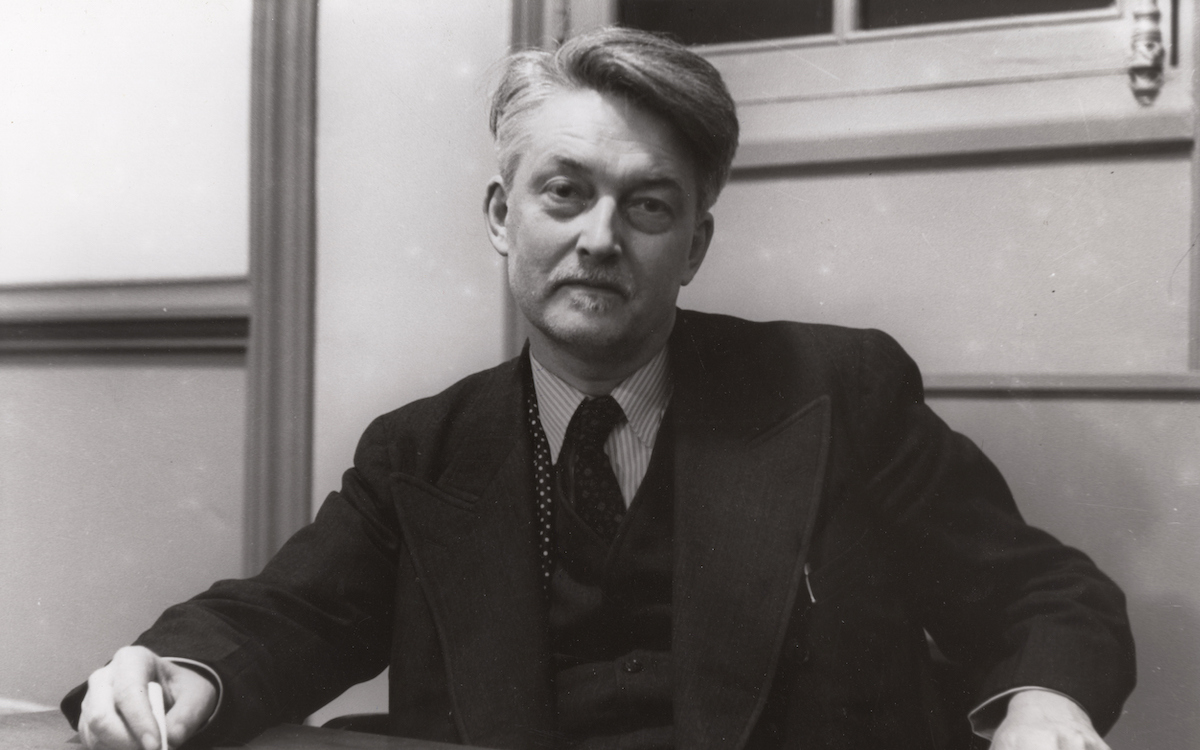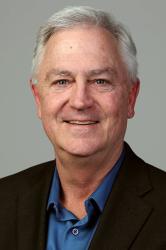On this particular day … we had just said to one another that if our nature was so unhappy as to possess only a pseudo-intelligence capable of everything but the truth, if, sitting in judgment on itself, it had to debase itself to such a point, then we could neither think nor act with any dignity. In that case everything became absurd—and impossible to accept.
That’s Raissa Maritain’s description of a dramatic, early moment in her marriage to Jacques Maritain, as the two faced together the nihilism they encountered in their studies at the Sorbonne in Paris. They would eventually find a home in the Catholic Church and Jacques would go on to become one of the most prolific and influential authors of the 20th century, whose work had an impact on the Second Vatican Council and the 1948 United Nations Universal Declaration of Human Rights.
Born in 1882, Jacques died on April 28, 1973, 50 years ago today.
None of this would have happened had Raissa and Jacques not found a way out of the existential malaise in which they were enmeshed at the Sorbonne. As Raissa points out, if human thought and action were bereft of any contact with the true and the good, human life would become a cruel and pointless comedy. Refusing to live out such a farce, they made what was in effect a suicide pact for one year hence. During that year, they would “extend credit to existence, look upon it as an experiment to be made, in the hope that to our ardent plea, the meaning of life would reveal itself.” Fortunately for them and us, they soon had an opportunity to study with Henri Bergson, whose philosophy of the Absolute gave them a foundation on which to base their thinking. They would go on to enter the Catholic Church, part ways with Bergson, and become lifelong students of the thought of St. Thomas Aquinas.
Raissa discovered Thomas first and passed his work on to Jacques, whose reading generated instantaneous recognition: “I was already a Thomist without knowing it.” He would go on to write many books of philosophy, spanning nearly all the philosophical disciplines, from logic to metaphysics, and ethics to aesthetics. Never content to restate what had been said before, he sought to bring Aquinas into contact with contemporary conversations and to articulate his teachings in a way that would bring it to life for modern readers.
He was confident that Aquinas had a wisdom that was much needed in our time, a time of civilization in crisis. Jacques and Raissa came of age in the first half of the 20th century, a period marked by the barbarism of the First World War, which cast grave doubts on the optimistic narrative of modern progress. Jacques detected a different peril during the Second World War. His thoughts about these matters can be found in a 1943 book with a surprising title for such musings, Education at the Crossroads. The West is rightly working to defeat the Will to Power politics of Nazism, with its fanatical belief in racial and nationalist purity. But Maritain anticipates problems for the West. Indeed, he worries that the West might lose by winning. The means of Western victory, namely its superior technology and technical expertise, might undermine the very things for which the West was fighting.
The danger is the triumph of “technocratic pragmatics.” With its reduction of knowledge to calculable phenomena, technocracy “leaves in human life nothing but relationships of force, or at best those of pleasure.” It ignores or repudiates the “spiritual dignity of man” and rests on “the assumption that merely material or biological standards rule human life and morality.” Thus does a subtle form of totalitarianism emerge as a hazard within liberal democracy. Jacques returns here to Raissa’s concerns about the reduction of human life to matter in motion, the result of which is, as she goes on to say, “relativism, intellectual skepticism, and—if one was logical—moral nihilism.” The political implications are already evident in what she calls the “new barbarism” that was to “deck itself out in the prestige of a culture already worn thin, already hypocritical, already prepared for the worship of force.”
What does that have to do with education, the title of Maritain’s book? Mirroring its devotion to technology, Western education is increasingly instrumentalist, fascinated with means rather than ends, fostering in students a tendency to think this way. The result, as C.S. Lewis would point out in The Abolition of Man, a book also published in 1943, is the elimination of, or at least the occlusion from view, any investigation of the ends or goods of human life, in light of which we might appraise various means or instruments. As in education, so too in the field of art: Maritain sees dangers in its subordination to ideological aims. Maritain’s criticisms of instrumentalized art take aim primarily at the totalitarian insistence that the only valuable art serves ideological ends.
Just as the human soul longs for truth, so too is it nourished by the encounter with beauty. The experience of the beautiful,Maritain explains, “has the savor of the terrestrial paradise, because it restores, for a moment, the peace and the simultaneous delight of the intellect and the senses.” Beauty is, as the contemporary political philosopher David Walsh puts it, the “pull of the real.” Maritain sees an affinity between the philosophical pursuit of wisdom and art:
There is a curious analogy between the fine arts and wisdom. Like wisdom, they are ordered to an object which transcends man and which is of value in itself, and whose amplitude is limitless, for beauty, like being, is infinite. They are disinterested, desired for themselves, truly noble because their work taken in itself is not made in order that one may use it as a means.
In the modern obsession with productivity, with information and activities that are means to other ends, which turn out themselves to be means to something else, life becomes a restless pursuit with no ultimate goal or end.
Now, these are fairly common claims in traditional circles. What’s distinctive about Maritain is the way he discerns and cultivates connections between deeply traditional teachings about human nature, truth and beauty, on the one hand, and very contemporary movements, particularly in the arts, on the other.
Maritain’s reflections on art, which run from his early Art and Scholasticism (1920) to Creative Intuition in Art and Poetry (1953), are hardly abstract academic enterprises. They arise out of a remarkable set of friendships with many of the great artists of the 20th century, including the Jewish painter Marc Chagall, about whose life and work Raissa wrote a book; the French Catholic artist Georges Rouault, whose work inspired Jacques to write his now famous Art and Scholasticism; and the composer Igor Stravinsky, whose turn to neo-classicism and sacred music was influenced by Maritain; and the surrealist filmmaker Jean Cocteau, whose epistolary exchanges with Maritain became a little book, Art and Faith (1926).
Maritain’s work on art and artists has proved remarkably influential. Thomas Merton and Flannery O’Conner both found inspiration in Art and Scholasticism, while contemporary poets Dana Gioia and Seamus Heaney have read Creative Intuition with something of the same sense of immediate recognition that Jacques experienced in reading Aquinas. Artists testify to Maritain’s deep insights into the creative process.
In his wonderful book The Very Rich Hours of Jacques Maritain: A Spiritual Life, the great Thomist scholar and former director of Notre Dame’s Jacques Maritain Center Ralph McInerny observes that Maritain embraced an “apostolate to contemporary intellectuals and artists.” That is the origin of the famous Thomistic Study Circles, lengthy gatherings that mixed prayer, study, and fellowship, which Jacques and Raissa hosted at their home. Yves Simon, perhaps the most philosophically gifted of all Jacques’ students, describes the setting in this way: “The living room was generally crowded, less by teachers or students than by writers, poets, painters, musicians, persons interested in mysticism, missionaries…. Most of the artists were of the vanguard description.” Including not just Catholics but also unbelievers, Jews, Orthodox, and Protestants, the meetings were not meant primarily to shore up the faith of those already within the Church. The study circles embodied Christian hospitality at its finest.
If the human soul longs for truth and beauty, it also seeks the good, not in the abstract but in the concrete realities of human life, in community. Like the lives of Jacques and Raissa, the study circles reflected a truth articulated beautifully by John Henry Newman, who describes the hospitality of St. Philip Neri as creating a “home of Christian mirth.” The Maritains knew what Neri and Newman knew, namely that “truth is upheld in the world not as a system, not by books, not by argument, not by temporal power, but by the personal influence” of those who in the areas of virtue and holiness are both “teachers and patterns of it,” whose hospitality invites others to participate in that life.

